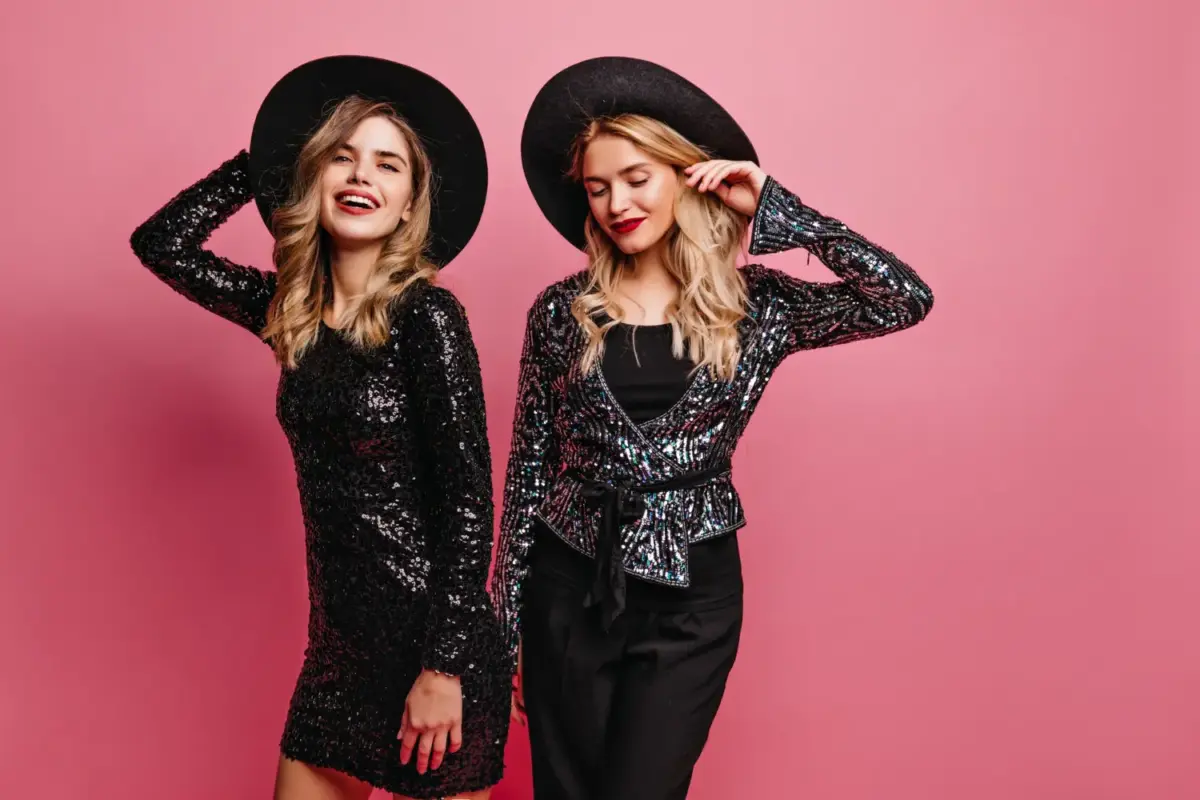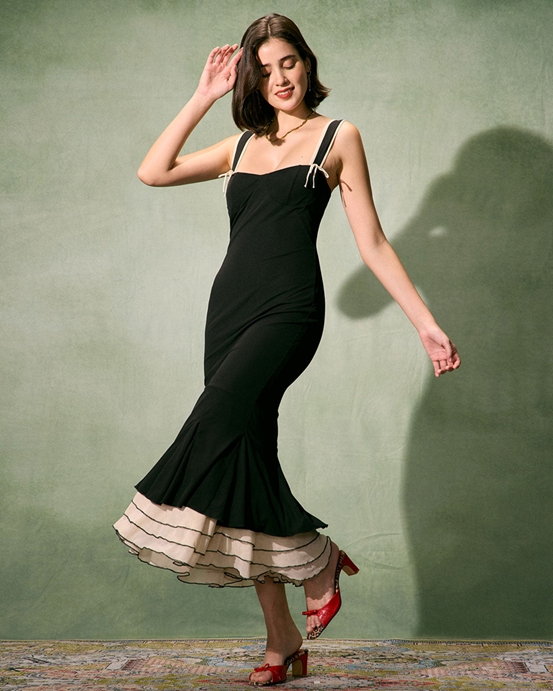In the carefully orchestrated symphony of personal style, accessories are far more than afterthoughts—they’re the crucial elements that transform good outfits into unforgettable ones. At Rvchicly, we believe that the art of accessorizing represents the highest form of style intelligence, allowing women to multiply their wardrobe’s potential while expressing individual creativity. Today, we explore the transformative power of thoughtful accessorizing and how to master this essential skill.
The Multiplier Effect: How Accessories Expand Your Wardrobe
The mathematics of a well-accessorized wardrobe is compelling: a single foundational piece paired with five different accessory combinations creates five distinct looks. This exponential effect explains why accessories often deliver the highest style return on investment.
“When we design Rvchicly’s core pieces, we’re simultaneously envisioning multiple accessory pathways,” explains our creative director. “Each garment is a canvas designed to support various stylistic directions.”
Consider our Rvchicly Essential Shift Dress in black: With architectural gold jewelry and structured handbag, it projects executive authority; with layered bohemian accessories and artisanal elements, it transforms for creative environments; with minimal adornment and refined footwear, it becomes the perfect foundation for formal occasions.
This versatility isn’t accidental—it’s engineered through intentional design that considers proportion, negative space, and color receptivity.
Strategic Accessorizing by Garment Type
Different garment styles create distinct opportunities for accessory integration. Understanding these relationships helps build more cohesive and impactful outfits:
Necklines as Framing Devices
Each neckline creates a specific visual field that determines optimal jewelry placement:
V-Necks: Create a natural triangular space that echoes the same shape in pendant necklaces or Y-chains. The diagonal lines of V-necks particularly complement:
- Graduated strand necklaces that follow the neckline’s angle
- Pendant necklaces where the focal point rests at or slightly above the lowest point of the V
- Earrings with elongated shapes that parallel the neckline’s diagonal
Crew Necks: Offer a clean horizontal line that pairs beautifully with:
- Statement collar necklaces that rest precisely along the garment’s edge
- Shorter pendants (16-18″) that create a focal point against the solid background
- Cluster earrings that introduce visual interest without competing with the neckline
Boat Necks: With their elegant horizontal expanse, these necklines often work best with:
- Statement earrings as the primary jewelry focus
- Hair accessories that complement the horizontal line
- Bracelets and rings that draw attention to gestures rather than competing with the neckline
“Neckline compatibility isn’t merely about aesthetics,” notes our styling director. “It’s about creating visual harmony between the garment’s existing lines and the accessories you introduce.”
Silhouette Balancing
The volume and structure of your garments determine which accessories will create proportional balance:
Fluid, Drapey Pieces: Benefit from accessories with architectural structure:
- Geometric jewelry with clean lines
- Structured handbags that provide counterpoint to the movement
- Belt definition that creates waist awareness within flowing fabrics
Structured, Tailored Garments: Create harmony with accessories that introduce organic elements:
- Jewelry with natural forms or asymmetrical design
- Softer bag silhouettes that relax the overall impression
- Scarves or other flowing elements that introduce movement
This counterbalancing creates visual interest through thoughtful contrast rather than matching.
The Focal Point Principle
Every well-composed outfit benefits from a clear visual hierarchy with an intentional focal point. Accessories often serve as this focal element, drawing attention precisely where you want it:
Creating Emphasis
To establish a strong focal point:
- Decide which area you want to emphasize (face, waistline, overall silhouette)
- Place your most distinctive accessory in this zone
- Keep other accessories subdued to prevent competition
“Think of accessorizing as directing the viewer’s gaze,” suggests our visual merchandiser. “You’re creating a path for the eye to follow, with clear destinations.”
The Rule of Three
While fashion rules are made to be broken, the “rule of three” provides a reliable starting point for balanced accessorizing:
- One statement piece (the focal point)
- Two complementary accessories in supporting roles
- Consider earrings as a single accessory rather than a pair
This approach prevents accessory overload while still creating sufficient interest.
Investment vs. Trend: Building Your Accessories Collection
A strategic approach to accessory acquisition balances timeless investment with trend exploration:
Investment Categories
These accessories justify higher expenditure due to their longevity and impact:
Fine Jewelry Staples:
- Gold or silver hoop earrings in your most flattering size and weight
- A pendant necklace with personal significance
- Simple, quality studs in a precious material
Foundational Leather Goods:
- A structured handbag in your wardrobe’s dominant neutral
- A belt in the highest quality leather you can afford
- Classically styled shoes in versatile colors
Signature Scarves:
- One premium silk square in a pattern that incorporates your key wardrobe colors
- A lightweight wool or cashmere scarf in a versatile neutral
- A statement print that expresses your personal aesthetic
These pieces should exhibit impeccable craftsmanship and materials that improve with age.
Trend Exploration Categories
Reserve more modest budgets for:
Seasonal Color Injections:
- Costume jewelry in trending hues
- Fashion scarves in experimental patterns
- Smaller leather goods in season-specific colors
Silhouette Experiments:
- Bag shapes that reflect current trends
- Statement earrings in evolving scales and geometries
- Belt styles that correspond with evolving waistline placements
“At Rvchicly, we design our accessory collections with this dual approach in mind,” notes our accessories designer. “Our Core Collection offers investment-worthy pieces, while our Seasonal Accent Collection allows for trend participation without significant investment.”
The Psychology of Accessories: Beyond Aesthetics
Accessories perform psychological functions beyond their visual impact:
Transition Signals
Accessories provide valuable context cues that help others understand your intended mode:
- More substantial jewelry often signals professional contexts
- Increased sparkle or special materials indicate festivity
- Relaxed, organic materials suggest approachability and casual settings
Confidence Anchors
Many women develop signature accessory patterns that serve as confidence anchors:
- The bracelet stack that accompanies important negotiations
- The earrings worn for public speaking
- The scarf pattern that signals creative thinking days
These personal associations transform accessories from mere decorations into psychological tools for state management.
Accessorizing for Different Scenarios: Practical Applications
Let’s explore how thoughtful accessorizing transforms core wardrobe pieces for specific contexts:
The Versatile White Shirt
Our Rvchicly Signature Shirt transitions effortlessly through these accessory pathways:
Professional Authority:
- Gold link necklace resting precisely at the open collar point
- Slim leather belt in a rich burgundy
- Architectural watch or bracelet
- Structured leather portfolio or handbag
Creative Expression:
- Layered necklaces of varying lengths and textures
- Stacked bracelets with organic elements
- Artisanal or handcrafted belt
- Textured or printed bag with artistic details
Refined Weekend:
- Silk scarf tied loosely at the neck
- Minimal gold stud earrings
- Quality leather crossbody bag in a warm neutral
- Delicate chain bracelet with personal significance
The Classic Black Dress
Our Rvchicly Essential Dress transforms through these accessory combinations:
Evening Sophistication:
- Statement earrings with movement
- Single architectural cuff bracelet
- Clutch with subtle texture or hardware detail
- No necklace (allowing the earrings full focus)
Business Impact:
- Pendant necklace of moderate scale
- Quality watch as the only wrist adornment
- Structured handbag in a complementary neutral
- Small but quality earrings providing subtle polish
Creative Professional:
- Unique collar-style necklace in mixed materials
- Artistic ring as a conversation piece
- Textured or colored leather bag
- Earrings with unexpected elements or asymmetry
Culture and Context: Thoughtful Accessory Selection
While personal style is paramount, contextual awareness ensures your accessory choices communicate effectively:
Cultural Sensitivity
Different cultural contexts may assign varying meanings to specific accessories or styling approaches. When navigating global environments, research cultural significance of:
- Specific colors and materials
- Symbolic motifs or patterns
- Traditional versus contemporary interpretations
This awareness demonstrates respect while preventing unintentional miscommunication.
Setting-Specific Considerations
Different environments have evolved distinct accessory languages:
Corporate Settings:
- Emphasis on quality over quantity
- Preference for precious materials in smaller scale
- Appreciation for subtle distinction rather than obvious branding
Creative Industries:
- Greater acceptance of artistic expression
- Appreciation for unique or handcrafted elements
- Less distinction between “costume” and “fine” categories
Social Occasions:
- Higher tolerance for sparkling elements and special materials
- Increased scale and drama compared to daytime
- More expressive or trend-forward choices
Understanding these unwritten codes allows for personal expression while still demonstrating contextual intelligence.
Seasonal Transitions Through Accessories
One of accessories’ most powerful functions is their ability to extend core wardrobes across seasons:
Summer to Fall
Transition core summer pieces with:
- Introducing richer colors through accessories
- Adding textural elements like light scarves
- Incorporating more substantial metals or stones in jewelry
Winter to Spring
Refresh winter foundations with:
- Lighter-hued leather goods
- Introduction of natural materials like raffia or shell
- Brighter metals to reflect increasing light
These seasonal shifts allow core garments extended wear while keeping their styling contextually appropriate.
The Rvchicly Accessorizing Philosophy
At Rvchicly, we believe accessorizing represents the highest form of style intelligence.




